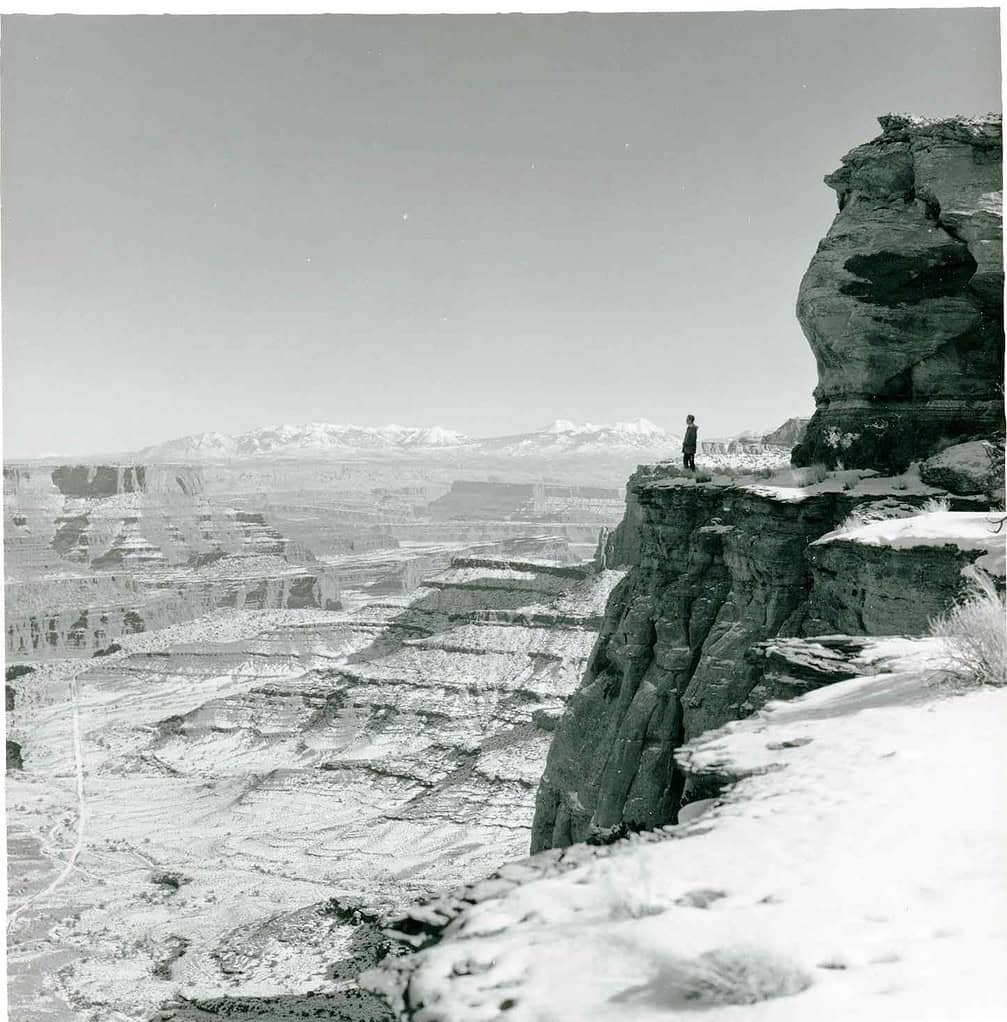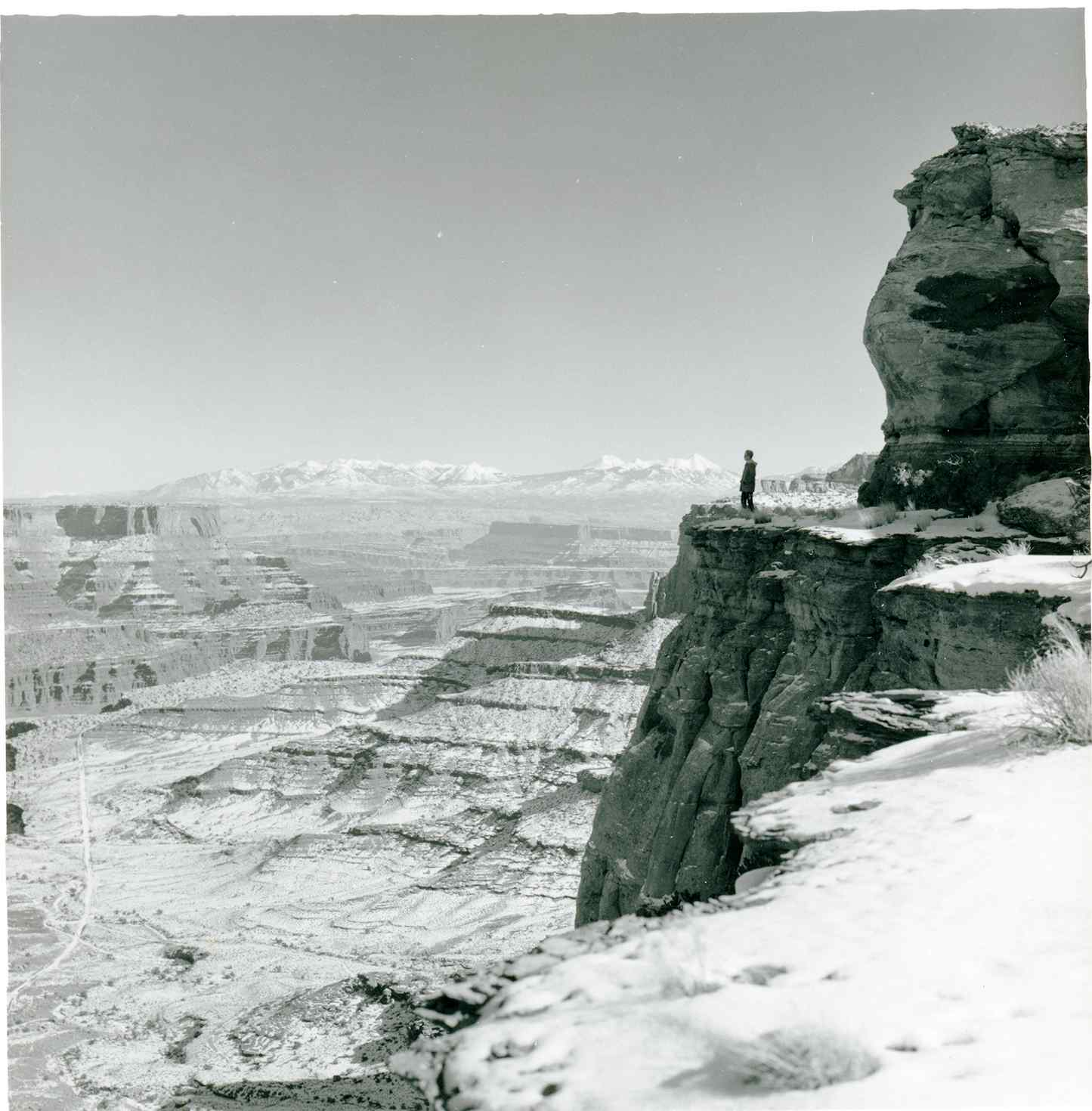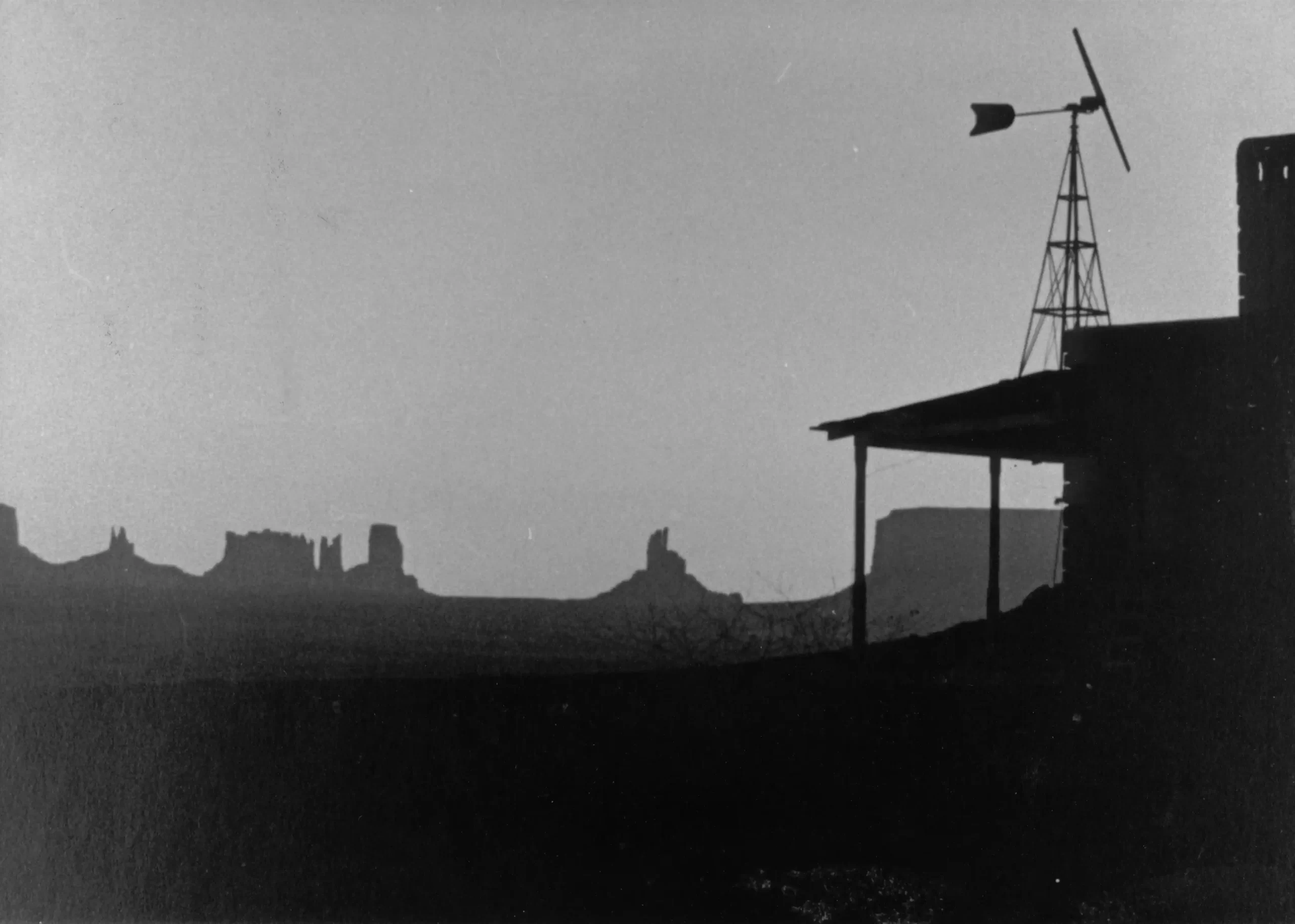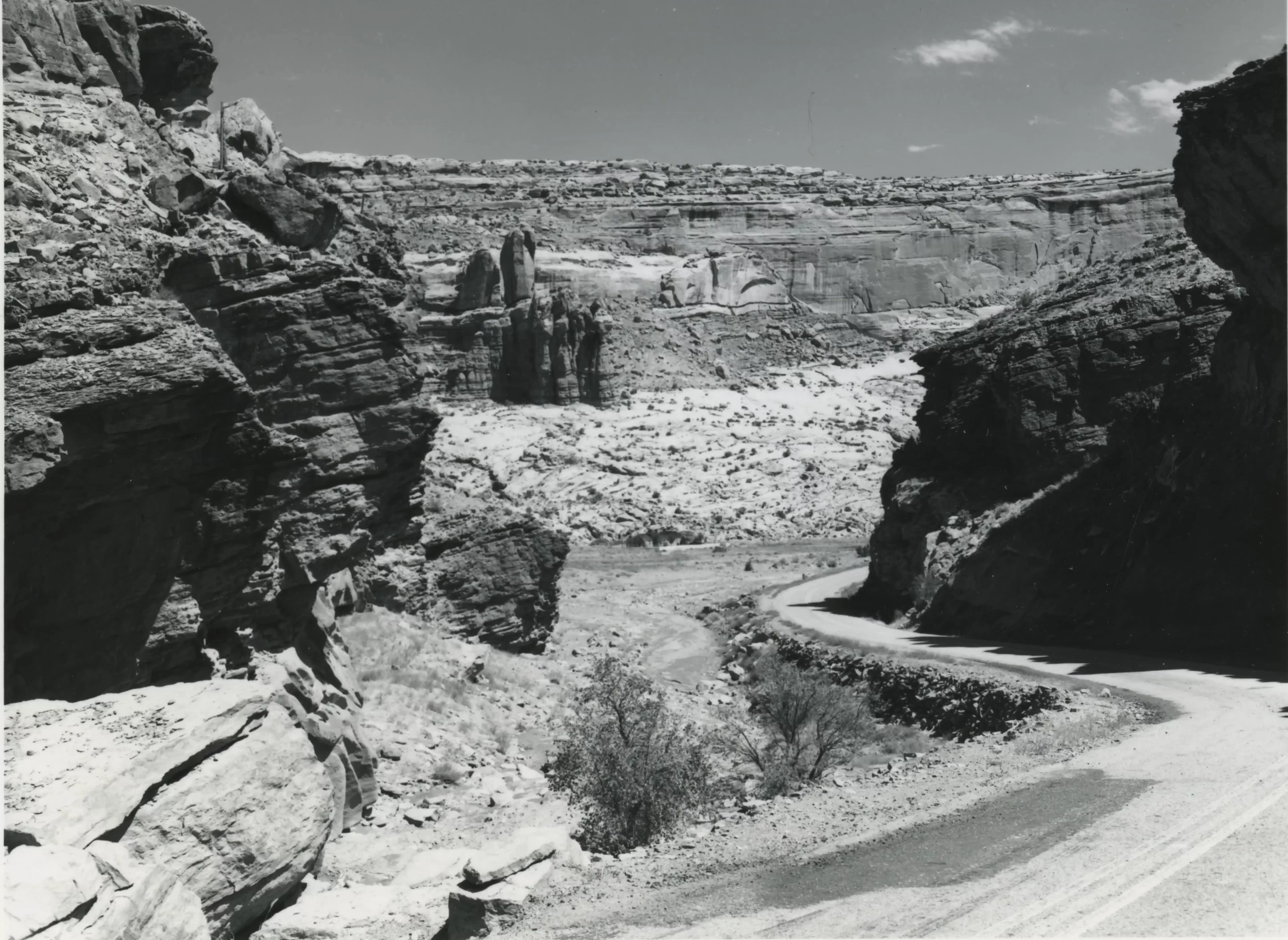Some information may be outdated.
What is the most distinct geologic feature of the Moab area? It’s a champion difficult to crown with competitors like the spires of the Fisher Towers, freestanding towers including Castleton and Lighthouse, and ancient dunes found across Arches and Sand Flats.
But the White Rim, sandstone part of the Cutler Group, which lies below the Moenkopi Formation and above the quickly eroding Organ Rock Shale, can be seen for many miles, a distinct line standing out from the surrounding red rock.
Moab’s White Rim draws visitors not only for its unmistakable coloration – the striking geologic feature marks the edge of an ancient sand dune environment and broader marine conditions that formed 500 million years ago.
Human history on the White Rim dates back thousands of years, with ample evidence of Ancestral Puebloan rock art and dwellings located throughout the area. White settlers utilized the region for winter cattle grazing before its incorporation into Canyonlands National Park in 1964.


While interconnecting trails built by ranchers and their cattle transected the area, it wasn’t until the Uranium Boom of the 1950s that miners constructed what we now call the White Rim Trail: a 100-mile route that circumnavigates the national park.
According to the Park Service, “The growth of America’s nuclear arms program in the 1950s created a high demand for uranium. Geologists thought that Utah’s canyon country contained a significant amount of uranium, but the rugged terrain made access difficult.
To encourage prospectors, the Atomic Energy Commission offered monetary incentives and built almost 1,000 miles of road in southeast Utah. In Canyonlands, these roads include the popular White Rim Road at the Island in the Sky.”
Ultimately, very little uranium was discovered and mined along the White Rim, but the route has become an iconic off-road and mountain biking route now used by nearly 20,000 visitors each year.
The Moab Museum is dedicated to sharing stories of the natural and human history of the Moab area. To explore more of Moab’s stories and artifacts, find out about upcoming programs, and become a Member, visit www.moabmuseum.org.
Appreciate the coverage? Help keep local news alive.
Chip in to support the Moab Sun News.





